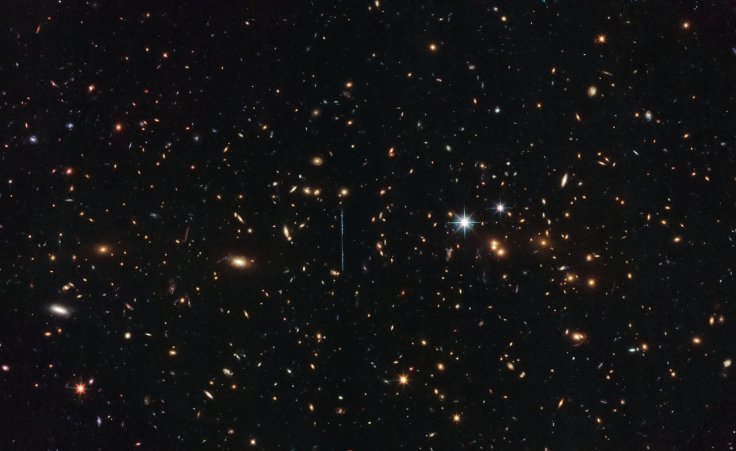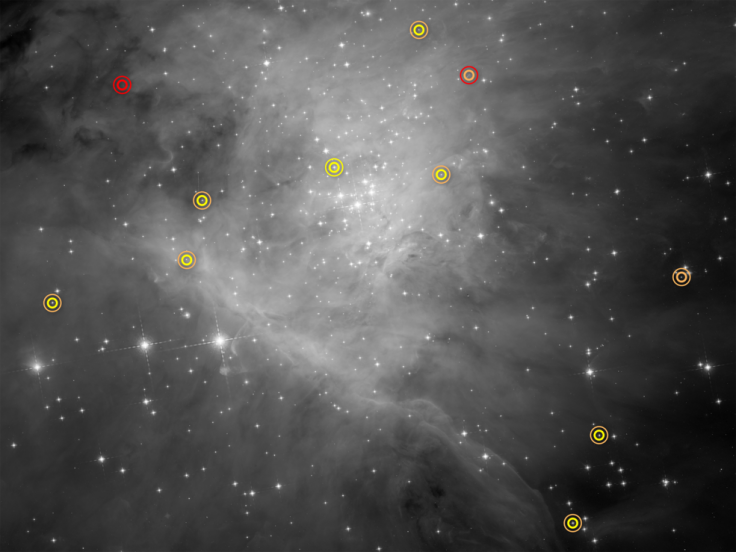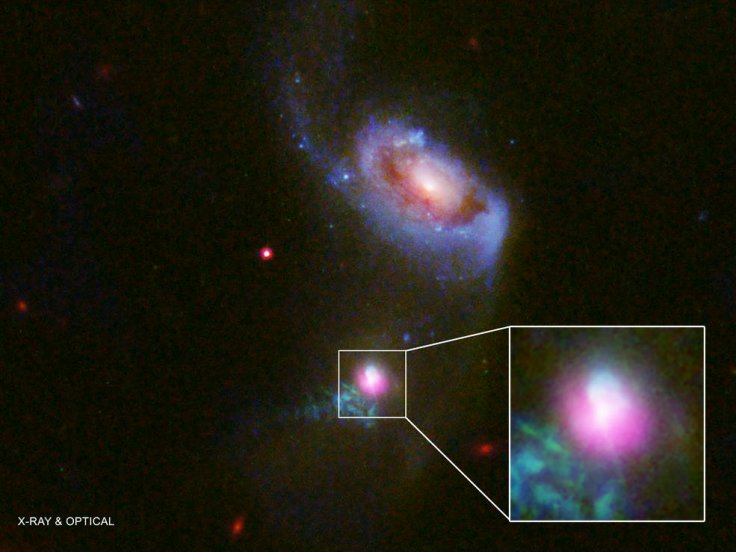
Nasa has identified an enormous galaxy cluster in the distant Universe which has the mass of around three million billion suns with the help of Hubble Space Telescope. The galaxy cluster officially known as ACT-CLJ0102-4915, and nicknamed as "El Gordo" ("the Fat One" in Spanish) is the largest, hottest, and brightest X-ray galaxy cluster ever discovered in the distant Universe.
Galaxy clusters are the largest objects in the Universe formed by smaller galaxy groups that are bound together by gravity over billions of years. European Space Agency's Very Large Telescope, NASA's Chandra X-ray Observatory, and the Atacama Cosmology Telescope had earlier found in 2012 that the El Gordo was formed from two galaxy clusters colliding at millions of kilometers per hour speed.
El Gordo galaxy clusters have been formed by interactions of dark matter and dark energy. Hubble space telescope has identified that the entire mass of the galaxy cluster was concentrated in form of a dark matter. It was found that the "normal" matter in the galaxy was mainly formed from hot gas which appears bright in the X-ray wavelength. The hot gas is believed to be separated from the dark matter following the galaxy collision. Even though hot gas is slowing down, dark matter is still gaining pace.
RELICS (Reionization Lensing Cluster Survey) have taken images of the galaxy cluster using Hubble's Advanced Camera for Surveys and Wide-Field Camera 3. The RELICS images included 41 gigantic galaxy clusters will provide data's of the brightest distant galaxies for the upcoming James Webb Space Telescope.

Hubble has recently discovered small, faint brown dwarfs in Orion Nebula among newborn stars. These brown dwarfs are heavier than gas giants but are lighter than lightest stars. Even though these objects do not produce energy like stars, they might actually provide evidence of how stars and planets form.
The telescope has also identified the presence of water in the brown dwarf's atmosphere. Even though water signatures could be identified on these substellar objects, Earth does not show these signatures as its atmosphere absorbs water vapor on its own.
The telescope has recently found 10,000 normal Sun-like stars in the central region of the Milky Way which moves around the galaxy's bulge at different speeds. This discovery has given a better clue of the evolution of the galaxy and its merger with smaller satellite galaxies. Hubble's high-resolution sharp cameras have simultaneously measured the motions of the Sun-like stars at the galaxy's bulge.

Hubble and Chandra space telescope have together found a supermassive black hole absorbing nearby gas and giving out the light.









